Ravioli is how I fell in love with cooking.
Loving food was easy. My mom is an amazing cook and I was never a picky eater — plus I was constantly growing taller and always felt hungry. I had a broad palate and would eat anything other than beets and tomato soup, but nothing made magic on my tastebuds quite like ravioli.
I watched my mom cook a fair amount growing up. She was always making something in the evenings, and could often be found in the kitchen. Something about ravioli, though, felt special. For one, we didn’t make it that often. It’s an involved process and as fun as its preparation is, sometimes there just aren’t enough hours in the day. Another thing that added to the intrigue was the fact that it was one of the only dishes that necessitated the emergence of our illustrious pasta machine from the bowels of our basement. And lastly, and probably most importantly, it tastes so insanely good.
I don’t remember when I first asked to learn how to make it, but almost for as long as I can remember, being able to make ravioli by myself seemed like the biggest rite of passage I would ever have the privilege of experiencing.
Maybe I begged. Maybe she offered and I was wise enough to jump on the opportunity. It doesn’t matter why or how, but ravioli was the first food I started to learn how to make after a crash course in scrambled eggs at my pre-school. My mother started me on the task with the lowest risk and the highest reward: the rolling of the dough.
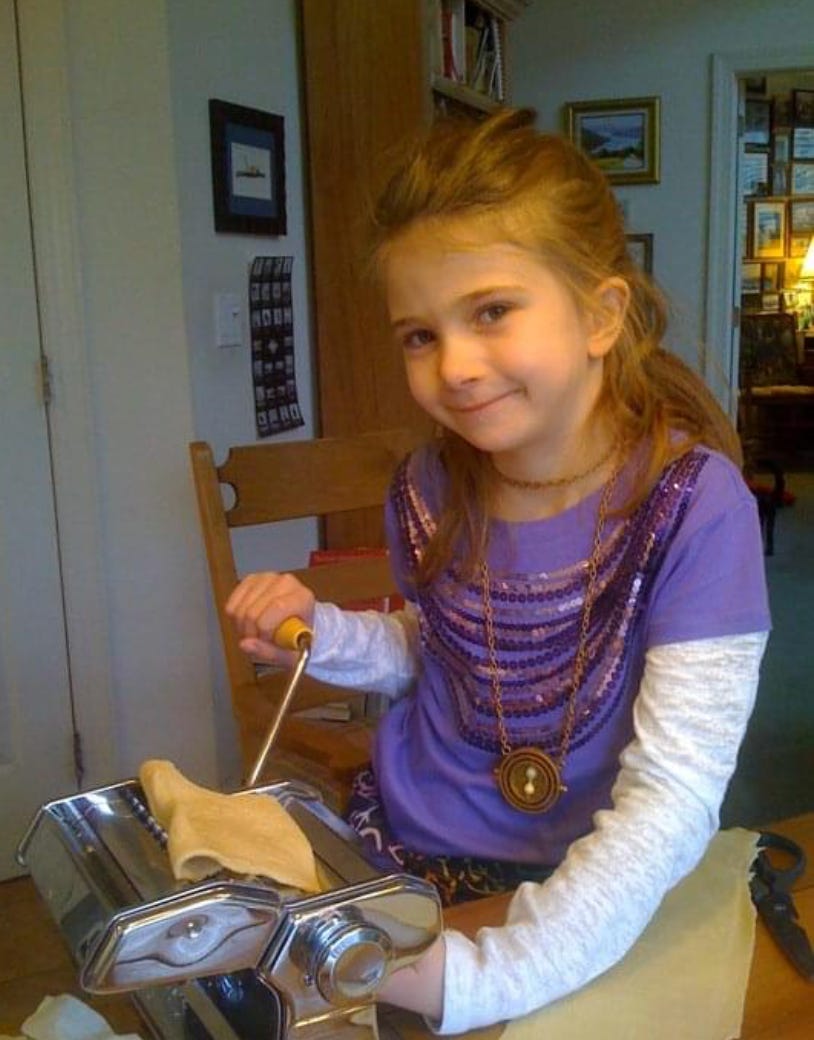
I never really considered it cooking. The dough would simply be dumped before me, already kneaded and ready to go, and I would just pass it through the pasta machine a few times, adding flour as it got sticky. Rolling pasta is a surprisingly forgiving process — if you mess up, you can always mush it into a ball and start again. I suppose it was cooking in a way, but to me, it was a magic act that allowed me to spend time with my mom, as it gave us nothing but time to talk. Slaving over an Atlas Pasta Machine is where we would laugh and reminisce, and it’s where I first heard about how she learned to cook. Her culinary education sounded torturous as a hyperactive child, but as I age, the methodology grows increasingly wise.
So now, I share with all of you the secret ingredient that made my mom into the cook she is today. She would sit in the kitchen and watch Philomena cook. That’s it. She would sit and watch. She never touched anything — no rolling pasta, no mixing dough, not even so much as passing the salt. She would simply sit and watch, and as the years passed, she learned. Maybe, in a way, this does make love the secret ingredient. She couldn’t learn unless she spent time in the kitchen with someone she loved that also loved her, and she wouldn’t have done it at all unless she loved the idea of being able to cook. Love at least sounds more poetic than sitting and watching.
Yet hearing this horror story at a mere seven years old, I imagined something akin to being strapped down to a splintering stool with a gag in your mouth, struggling against leather bonds alongside your siblings and cousins while an old woman cooks and forbids you from helping her, try as you might. This image is allegedly far from the truth. Consequently, I grew up grateful for the opportunity to roll pasta, even if it at times felt monotonous — as a young adult, it’s now nothing short of therapeutic. I simply remained excited for the day I would finally graduate to actually making the ravioli, where my mother sat, magically forming these squares of love, joy, and cheese. Turns out, that day of ravioli formation still hasn’t come, and probably won’t until the first time I’m flying solo. Regardless, the making of ravioli remains a magical process.
Perhaps because I loved ravioli so much, we added it to our fish dinner menu after figuring out that we could put lobster inside it. Our family has always made ravioli, it just didn’t join our fish dinner tables (or consistently get made with lobster) until my mom.
All of these recipes come from the heart, but our ravioli especially is a labor of love. In fact, I was most concerned about being able to assign numeric values to ingredients with this particular recipe. In our household, we pour “sufficient amounts” of flour into a bowl, mixing in “enough” eggs and kneading “until it feels right,” adding flour and water as the dough needs. The filling just takes a container of two or ricotta, plus the number of eggs that makes it the “right shade of yellow” and a “good consistency.”
It really is something that comes from the heart and experience. There are infinite recipes online and in cookbooks that would help you make some gorgeous ravioli in more reasonable serving sizes, and probably with better directions than I’m providing you. Maybe it’s silly for this cooking blog to not really help people cook, but it’s hard to write down words to a recipe that’s muscle memory. Maybe I should’ve been tallying the egg shells and stopping my mom to measure the flour, but quantifying it in the moment would break the spell, I’m certain.
What I’ve compiled hopefully serves as a good guideline if you’re interested in trying it for yourself, and gives a glimpse into the process. However, I don’t think making or eating ravioli should ever be a solitary task — the best way to prepare this is with at least two people who care about each other at least a little bit. The more love there is between chefs and their intended audience, the better it will taste. Even if you’re both capable of burning water, the memories will be better together. Plus, why would anyone want to make or eat ravioli alone when they could do it with a friend? I don’t think making ravioli is hard, but following my written instructions to produce something beautiful might be. Nevertheless, I invite you to try, though I highly recommend learning more actively if you have close personal connections to someone who cares about ravioli a lot (wow that’s crazy so many of the people reading this blog know me! And my mother!). At the very least, enjoy the photos and notes written by a certified Pasta Rolling Professional.
The vodka sauce, however, is killer no matter what it’s poured on top of, and those ratios are far more correct and straight-forward.
Disclaimer: As with most cooking, these recipes are all to taste. We’ve provided rough estimates for ratios, but feel free to adjust it to your own taste/needs — you’re cooking, so make something you’d like to eat!
Lobster Ravioli with Vodka Sauce
Timing: 4 hours prep, 1 hour cooking
Serves: Makes at least 150 ravioli
Ingredients/materials:
Lobster Ravioli:
Pasta:
10 ish eggs
7 cups of flour (plus lots of extra for rolling)
1/4 cup water
Filling:
48 oz/3lbs. whole milk ricotta cheese (“pot cheese” recommended)
6 ish eggs
3 sprigs of Italian flat leaf parsley
6 lobster tails
3 tbsp olive oil
3 cloves of garlic, crushed
Juice of 1 lemon
Pasta machine, fork, spoon, large kitchen knife, skillet, mixing bowls, rolling mat
Vodka Sauce:
20 cloves of garlic peeled, not crushed
212oz//13.25lbs. of peeled whole tomatoes (we use Nina’s)
1 cup grated parmesan
4 tbsps of chopped Italian flat leaf parsley
1 1/2 cups of cream
3 tbsp butter
1/4 cup olive oil
1 cup of vodka
1 tsp salt
Red pepper flakes (optional, to taste)
Large pot, fork, wooden spoon
Directions:
Vodka Sauce:
Chunk up the tomatoes by hand, squeezing them into a container to use in a moment.
Pour the olive oil into a large pot. Peel the garlic and put each clove into the oil, whole. Keep over medium-high heat, but don’t let them get brown.
After a few minutes, add the tomatoes, salt, and vodka. Stir. Put the heat on low and let it simmer for 30 minutes, or until the alcohol has boiled off.
Remove all of the garlic heads from the sauce — using a fork or wooden spoon works best, but regardless you will have to do some fishing.
Add cream, butter, parsley, and pepper flakes. Stir until evenly combined. It’s now ready to go! Keep it over low heat to stay warm, or put it in the fridge and heat it up on the stove when you’re ready to use it.
Lobster Ravioli:
Once your lobster tails are thawed, cut down the back side (opposite the legs) of the shell with a large, sharp knife. Peel it away, making sure to get as much meat out as possible and trying to keep each tail whole.
Put the lobster meat in a bowl and add the olive oil, lemon, and garlic. Mix and let it sit for 15 minutes.
Place the lobster meat directly onto a hot skillet and grill until brown, flipping to get both sides evenly cooked.

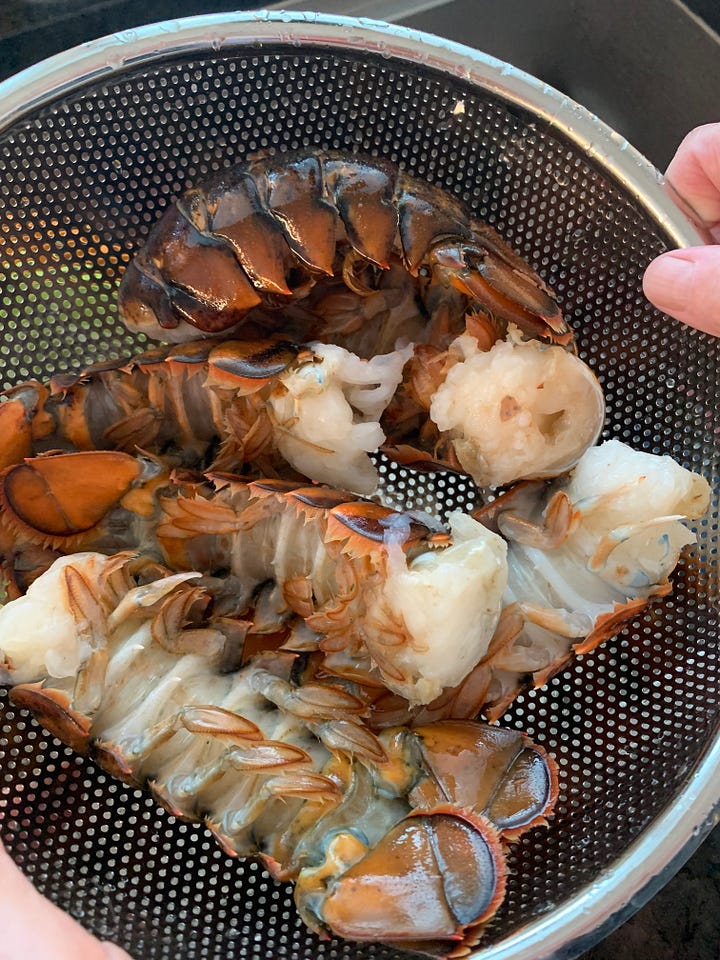

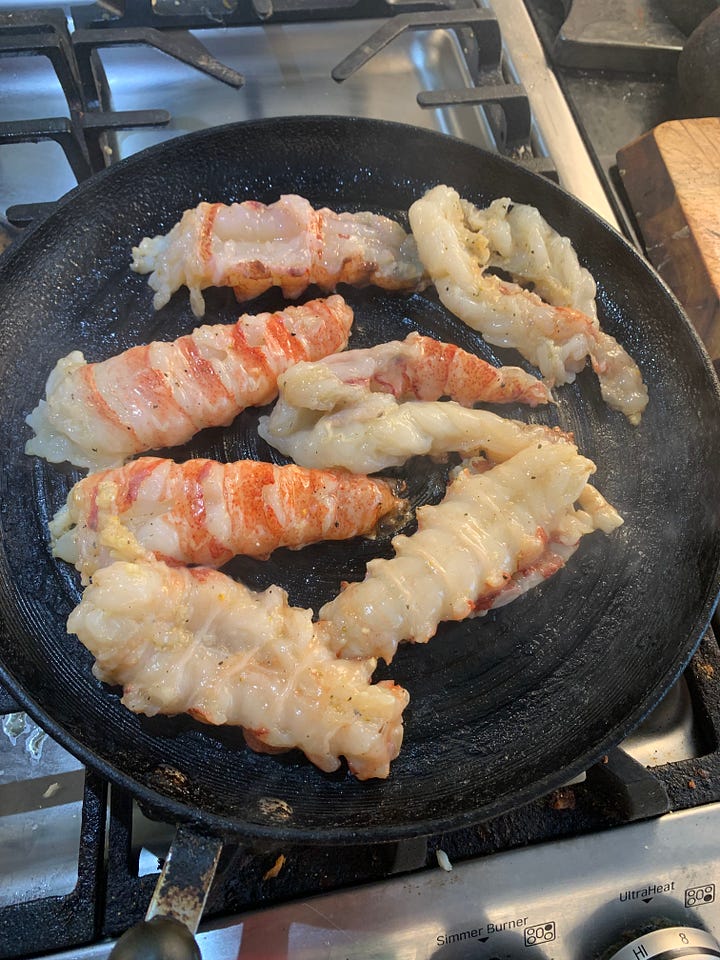
Once the lobster is cooked, chop it into small pieces.
In a medium bowl, combine ricotta, 6 eggs, lobster, and parsley. Mix until pale yellow and creamy. If the color doesn’t reach a pale yellow or it doesn’t seem creamy enough, add another egg. Set aside.
In a large bowl, put in half of the flour and mix it with the eggs with a danish whisk and/or your hands. Gradually add in the rest of the flour until the dough isn’t sticky anymore. Add the water gradually to help it stick together.
If the dough isn’t sticking together, add more water. If the dough is too sticky, add more flour.
Knead the dough until it’s gained some firmness and is consistently sticking together in a ball.
Take a small handful of the dough and put it into the pasta machine, rolling until you get to level 5 (substantially less than 1/10”). Each time you pass it through to roll it, fold it in half.
Lay your sheet of pasta flat over a floured surface (flour on a rolling mat works best). Spoon about a tablespoon of the filling onto the pasta, toward the middle of the sheet, spacing each dollop out by about 2 inches and leaving around an inch at each end of the pasta sheet.
Dip your finger in water and put the water down in between each glop of filling and along the lower border.
Fold the pasta over the long way, lining up the edges. Press your finger down in between each glob of filling, right where the water had been.
Cut along the line you just creased to make individual squares.
Using a fork, crimp the edges shut, going clockwise one way and flipping the square over to go counter clockwise the other. Push firmly, but not so hard that you go through the dough. Use the fork to poke a hole in the middle so it doesn’t explode when it boils.
Place each completed ravioli square onto a floured pan so they don’t stick together.
Keep making ravioli until you’ve made enough for your needs. It’s okay to stop when you have enough even if you have leftover dough/filling!
When you’re ready to eat, put the ravioli in a large pot of boiling salt water. Stop when the ravioli start to float to the surface and the pasta is al dente — they should look like delectable little pillows. You can check pasta texture by cutting off excess on the edge with a knife and eating it.
Plate with generous amounts of vodka sauce and enjoy!
Notes:
You don’t technically need a pasta machine — you can roll it by hand. However, it’s extremely hard to roll it as thin as you need. Machine assistance is strongly recommended.
By omitting lobster from this recipe you can make plain ravioli without implementing any other adjustments. I highly recommend it either way.
If you pass through dough that is too sticky, it will get holes or become bumpy. If this happens, just fold it in half, add more flour to the outside, and pass it through the machine again on the same thickness.
When in doubt, add more flour. The dough can stick together really easily.
When rolling dough and not working with the original ball, cover it with a barely damp paper or tea towel. This will prevent it from drying out when it’s not being worked with.
Leftover dough should be formed into a tight ball and wrapped in plastic wrap. It’ll keep in the fridge for at least a few days, as will the filling. Leftover dough can be used to make any shape of pasta your heart desires, or you can take a page out of our book and make lasagna with the dough and filling— general recipe coming soon(ish).
Buon appetito!






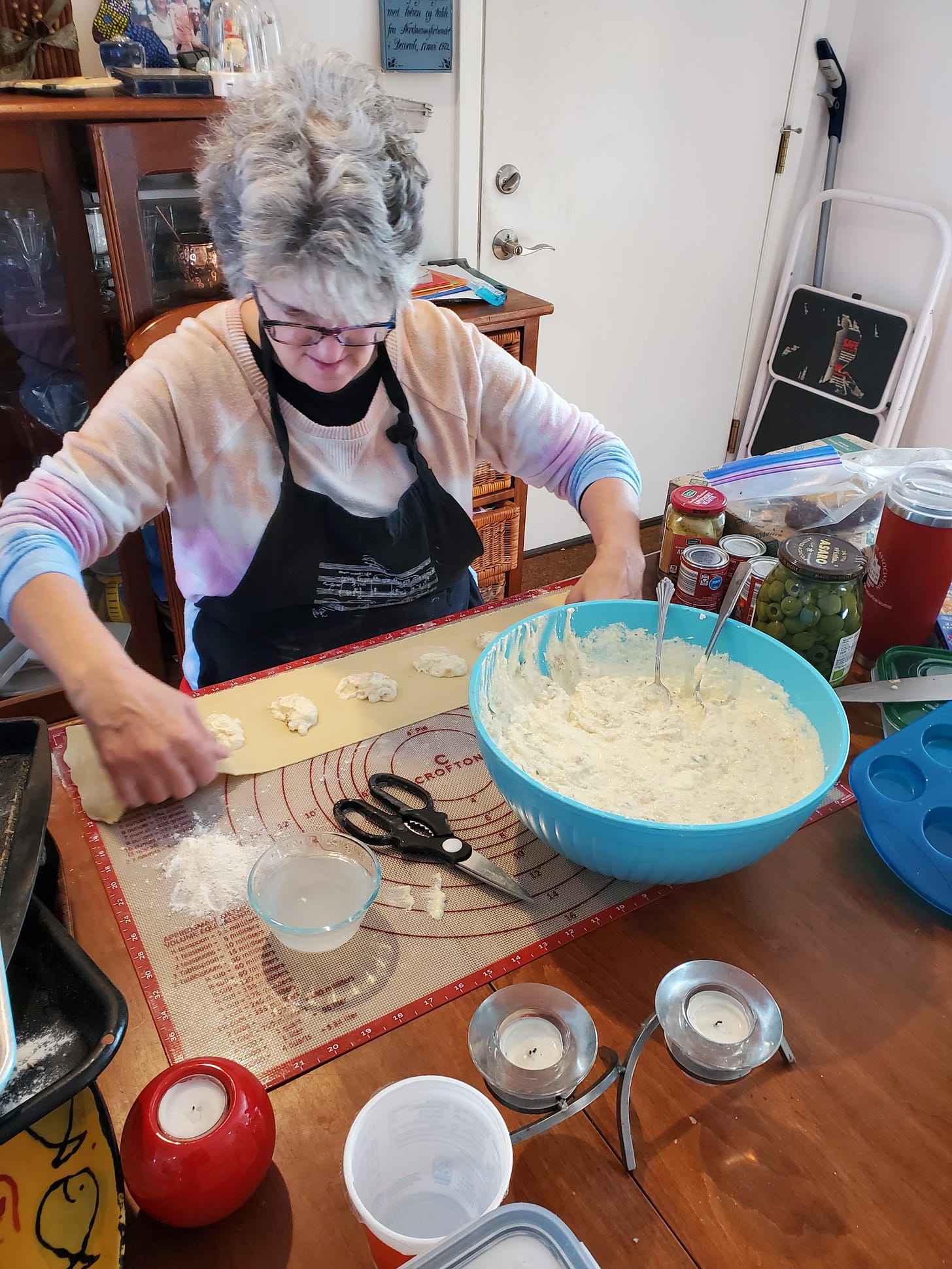
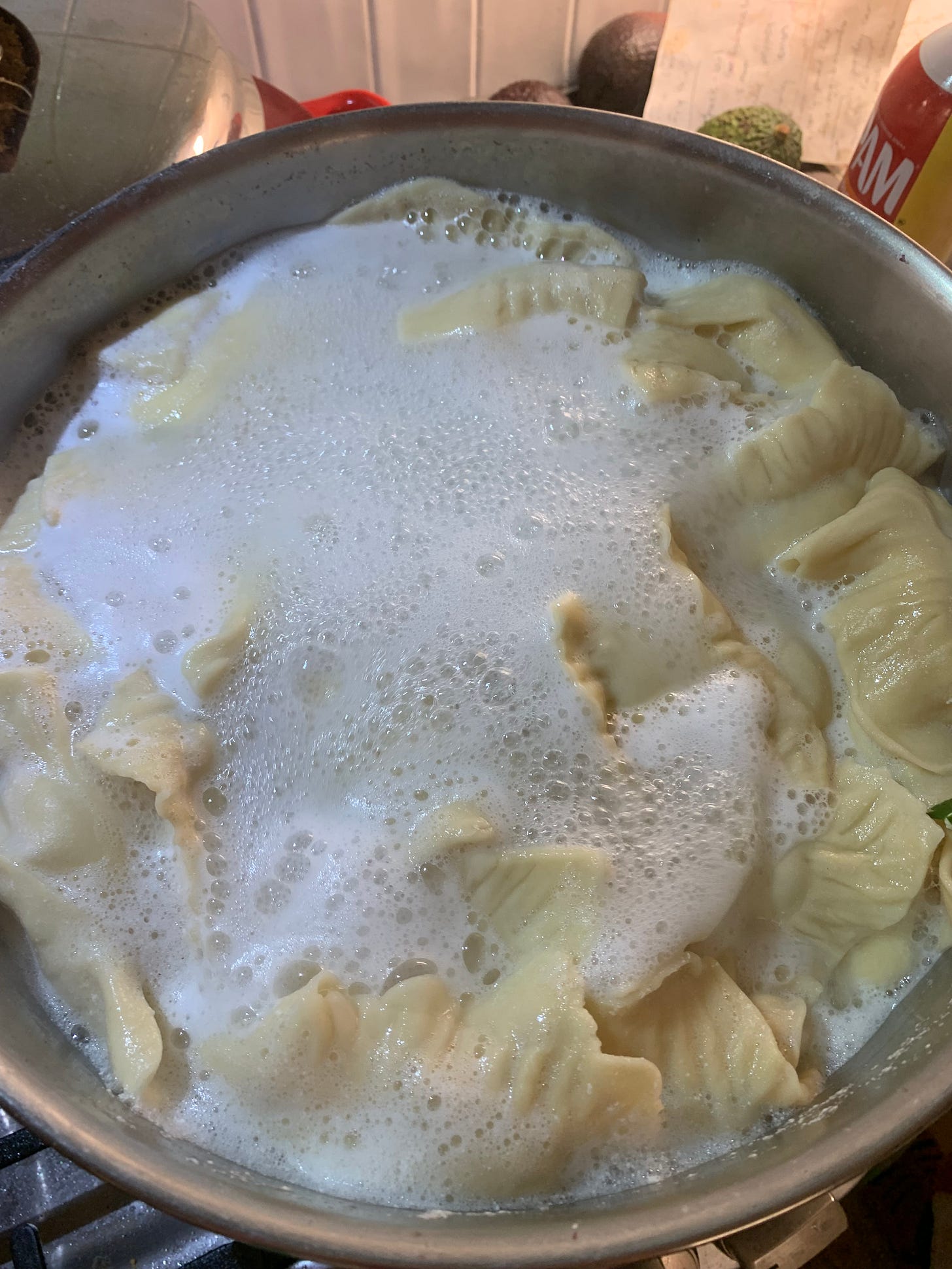

The one and only time I had lobster ravioli was the frozen kind from costco at a neighbor's house when I was maybe 12 and not gonna lie it was delicious. If that is my baseline, I am confident this would blow me away
PS - John is smiling down on your blog!!!